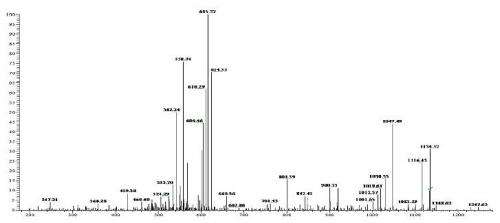Researchers identify the molecules allowing mice to sniff out the genes of other mice

(Medical Xpress)—It's a theory much discussed in the media – that animals and humans are able to smell certain genes linked to the immune system – which in turn influences their choice of mate. The genes in question are known as MHC (major histocompatibility complex) genes. Selecting a mate with very different MHC genes from one's own makes sense, because your offspring will then have a greater variety of immunity genes – and a correspondingly greater resistance to disease. But until now, no scent offering information about MHC genes had been discovered among those emitted by humans and animals.
Now researchers from the University of Tübingen's Immunology department and the Proteome Center, working with their colleagues from the University of Saarland, have managed to do just that. Their results, just published in Nature Communications, will lead scientists to review the "sniff out a mate" theory.
It is well known that the MHC genes determine which MHC peptides a cell presents at its surface to the immune system's killer cells. These peptides are usually composed of the body's own proteins and therefore do not set off any reaction. But if the MHC peptides come from a virus, the immune system's killer cells can recognize that and attack it. According to one current theory, the MHC peptides also communicate the smell which offers information about MHC genes – a theory tested in mice. Special sensor cells were found which are able to recognize and distinguish the various MHC peptides from one another. Experiments have shown that synthetic MHC peptides in high concentrations were able to influence the behavior of mice, and that mouse urine carries what is believed to be the smell of MHC genes. Until now, it was not known whether MHC peptides even occurred naturally in urine.
The researchers have now been able to identify in mouse urine an MHC peptide indicating a corresponding MHC gene. Yet the concentration was extremely low – the urine contained around one-millionth of the amount of MHC peptides than had been used in previous behavioral experiments. And hundreds of other peptides were identified in the mouse urine along with this MHC peptide – those peptides were derived from all kinds of genes but had nothing to do with MHC genes. These peptides should enable mice to map most of the fellow mouse's genes. They appear in concentrations up to a million times higher than that of the MCH peptide, coming closer to the amount used in the behavioral experiments. Both kinds of peptides can activate specific olfactory cells in mice, as researchers from the University of Saarland showed.
These results suggest that "smelling" similarities and differences in the overall genome plays a far greater role than the smell of immuno-genes. Smell could provide comprehensive information on the relationship between two individuals. The researchers found that non-MHC peptides that were dif-ferent between two mice of the same species could be precisely distinguished by their smell recep-tor cells. This raises the question of how the previous experiments carried out with unnaturally high concentrations of synthetic MHC peptides ought to be interpreted. To this day, no MHC peptide has been detected in human urine, sweat, or saliva. The large number of other peptides – giving a picture of nearly all other genes and occurring in far greater concentrations – needs to be taken into account in future behavioral experiments. It may be that these frequent peptides completely cover up the influence of other peptides providing information on the immune system.
More information: Sturm, T.et al. Mouse urinary pep-tides provide a molecular basis for genotype discrimination by nasal sensory neurons. Nature Communications. doi: 10.1038/ncomms2610; 19. März 2013.
















